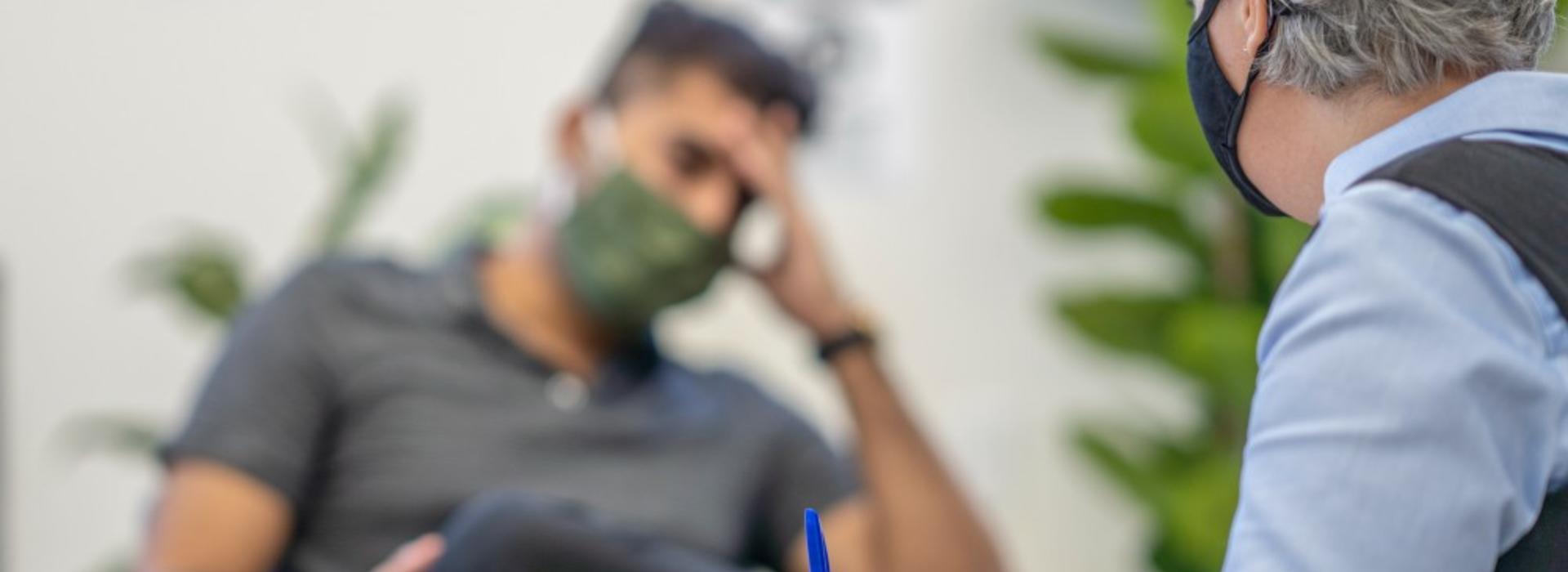
U of M Medical School launches new mechanistic study of psilocybin
The research aims to identify how the compound may increase mental flexibility and neuroplasticity
MINNEAPOLIS/ST. PAUL (12/01/2021) — A new clinical trial led by the University of Minnesota Medical School seeks to understand how psilocybin, an investigational compound, alters brain function with the hope of informing improvements in current treatment options for certain mental illnesses. It’s the first-ever study to measure how this compound alters the brain’s use of contextual cues during visual tasks. At the same time, the study also hopes to identify how long these brain changes last, which could help therapists identify the therapeutic window of opportunity for psychotherapy interventions.
Jessica Nielson, PhD, an assistant professor in the Department of Psychiatry and Behavioral Sciences at the U of M Medical School and core faculty at the U of M’s Institute for Health Informatics, is the lead investigator of the study.
“One arm of the study, which is being led by predoctoral researcher Link Swanson, looks at visual perception and how it is affected by psilocybin,” Nielson said. “Another arm of the study is looking at the time-course of brain changes produced by psilocybin, using diffusion tensor imaging (DTI), a type of MRI scan that can visualize dendritic spines, which until now, has only been shown in animal models.”
The study is currently enrolling up to 46 carefully vetted participants who have good physical health and experience taking psilocybin but do not have a current or previously-diagnosed major mental illness or substance use disorder.
“The point is to enroll people who are comfortable with psilocybin and are able to navigate their own mind very well because they will be asked to do visual performance tasks while in an altered state of consciousness,” Nielson said.
After enrollment, participants will undergo a series of baseline tests to measure blood and brain biomarkers of neuroplasticity prior to taking psilocybin, which include blood draws and MRI and EEG scans. Then under the supervision of clinicians within the M Health Fairview Clinical Research Unit, participants will undergo the first of two dosing sessions — one with psilocybin and one with a placebo (niacin).
“It’s a triple-blind study, so neither the participants, researchers nor the statistician will know which compound participants get first, and we will monitor them the entirety of their session. During their session, they will be asked to wear an EEG and perform visual perception tasks on a computer,” Nielson said. “After that day, they come back three more times — the next day, three to four days after, and seven days after — for MRI scans. About a week after that, after the brain has had a ‘washout’ period, they will return for their second dosing session, where they will be given whatever study compound they didn’t have during their first session.”
An independent statistician will analyze all of the results, which Nielson hopes will provide new information about the mechanisms of how exactly psilocybin changes the brain and when. Investigating the visual effects of psilocybin will illuminate general principles by which psilocybin might act on other circuits in the brain, including cognition, emotion and therapeutic outcomes, potentially yielding new scientific insights on the relationship between psilocybin and mental health.
“And, if we can figure out the time-course of this therapeutic window of opportunity, it also gives therapists a more informed protocol for how long they have after a dosing session to do integrative psychotherapy — exactly how long they have to harness the brain’s neuroplasticity to get that deeply-ingrained, pathological behavior or belief changed,” Nielson said.
Nielson is seeking additional funding to grow her research team and maintain the pace of enrollment for the study, which is expected to have peer-reviewed results available by 2024. Tax-deductible donations to this study can be made to the PATH Fund through the University of Minnesota Foundation.
###
About the University of Minnesota Medical School
The University of Minnesota Medical School is at the forefront of learning and discovery, transforming medical care and educating the next generation of physicians. Our graduates and faculty produce high-impact biomedical research and advance the practice of medicine. We acknowledge that the U of M Medical School, both the Twin Cities campus and Duluth campus, is located on traditional, ancestral and contemporary lands of the Dakota and the Ojibwe, and scores of other Indigenous people, and we affirm our commitment to tribal communities and their sovereignty as we seek to improve and strengthen our relations with tribal nations. For more information about the U of M Medical School, please visit med.umn.edu.
For media requests, please contact:
Kat Dodge
Communications Manager
University of Minnesota Medical School
kdodge@umn.edu